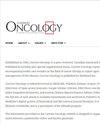Factors that Affect Outcome of Ultrasound-Guided Radiofrequency Ablation of Renal Masses
IF 2.8
4区 医学
Q2 ONCOLOGY
引用次数: 0
Abstract
The purpose of this study was to examine the factors influencing the efficacy and safety of the ultrasound-guided radiofrequency ablation of renal tumors. Between January 2010 and December 2018, 159 patients with renal tumors treated with ultrasound-guided percutaneous radiofrequency ablation at our institution were included in this study. Biopsies were performed for histopathological analysis prior to each ablation. Patients underwent computed tomography follow-ups at 3, 6, and 12 months and were subsequently observed on an annual basis. The primary efficacy rate (i.e., residual tumor), local tumor progression, morbidity and mortality, and possible outcome predictors (age, body mass index, gender, tumor size, tumor location, tumor characteristics, ablation temperature, and reported technical problems) were analyzed using binary logistic regression. At the first follow-up, 3 months after ablation, the primary efficacy rate was 79%. Two percent of the tumors showed local tumor progression during the whole follow-up. Tumor proximity to the collecting system and the final temperature in the ablation region were associated with the occurrence of residual tumor (OR = 2.85, p = 0.019 and OR = 4.23, p = 0.006, respectively). A similar trend was shown for tumors larger than 3 cm (p = 0.066). A short distance to the collecting system and the ablation temperature were significantly related to the occurrence of residual tumors after the radiofrequency ablation of small renal masses. The ultrasound guidance used in our study has a lower primary efficacy rate than the computed tomography guidance used in comparable studies.影响超声引导下肾脏肿块射频消融术效果的因素
本研究旨在探讨影响超声引导下肾肿瘤射频消融术疗效和安全性的因素。2010年1月至2018年12月期间,我院纳入了159例接受超声引导下经皮射频消融术治疗的肾肿瘤患者。每次消融前均进行活组织病理分析。患者在 3 个月、6 个月和 12 个月时接受计算机断层扫描随访,之后每年接受一次观察。采用二元逻辑回归分析了主要有效率(即残留肿瘤)、局部肿瘤进展、发病率和死亡率以及可能的结果预测因素(年龄、体重指数、性别、肿瘤大小、肿瘤位置、肿瘤特征、消融温度和报告的技术问题)。在消融术后 3 个月的首次随访中,主要有效率为 79%。在整个随访期间,2%的肿瘤出现局部进展。肿瘤靠近收集系统和消融区域的最终温度与残留肿瘤的发生有关(OR = 2.85,p = 0.019 和 OR = 4.23,p = 0.006)。大于 3 厘米的肿瘤也有类似趋势(P = 0.066)。与集合系统的短距离和消融温度与肾脏小肿块射频消融术后残留肿瘤的发生显著相关。与同类研究中使用的计算机断层扫描引导相比,我们的研究中使用的超声引导的主要有效率较低。
本文章由计算机程序翻译,如有差异,请以英文原文为准。
求助全文
约1分钟内获得全文
求助全文
来源期刊

Current oncology
ONCOLOGY-
CiteScore
3.30
自引率
7.70%
发文量
664
审稿时长
1 months
期刊介绍:
Current Oncology is a peer-reviewed, Canadian-based and internationally respected journal. Current Oncology represents a multidisciplinary medium encompassing health care workers in the field of cancer therapy in Canada to report upon and to review progress in the management of this disease.
We encourage submissions from all fields of cancer medicine, including radiation oncology, surgical oncology, medical oncology, pediatric oncology, pathology, and cancer rehabilitation and survivorship. Articles published in the journal typically contain information that is relevant directly to clinical oncology practice, and have clear potential for application to the current or future practice of cancer medicine.
 求助内容:
求助内容: 应助结果提醒方式:
应助结果提醒方式:


